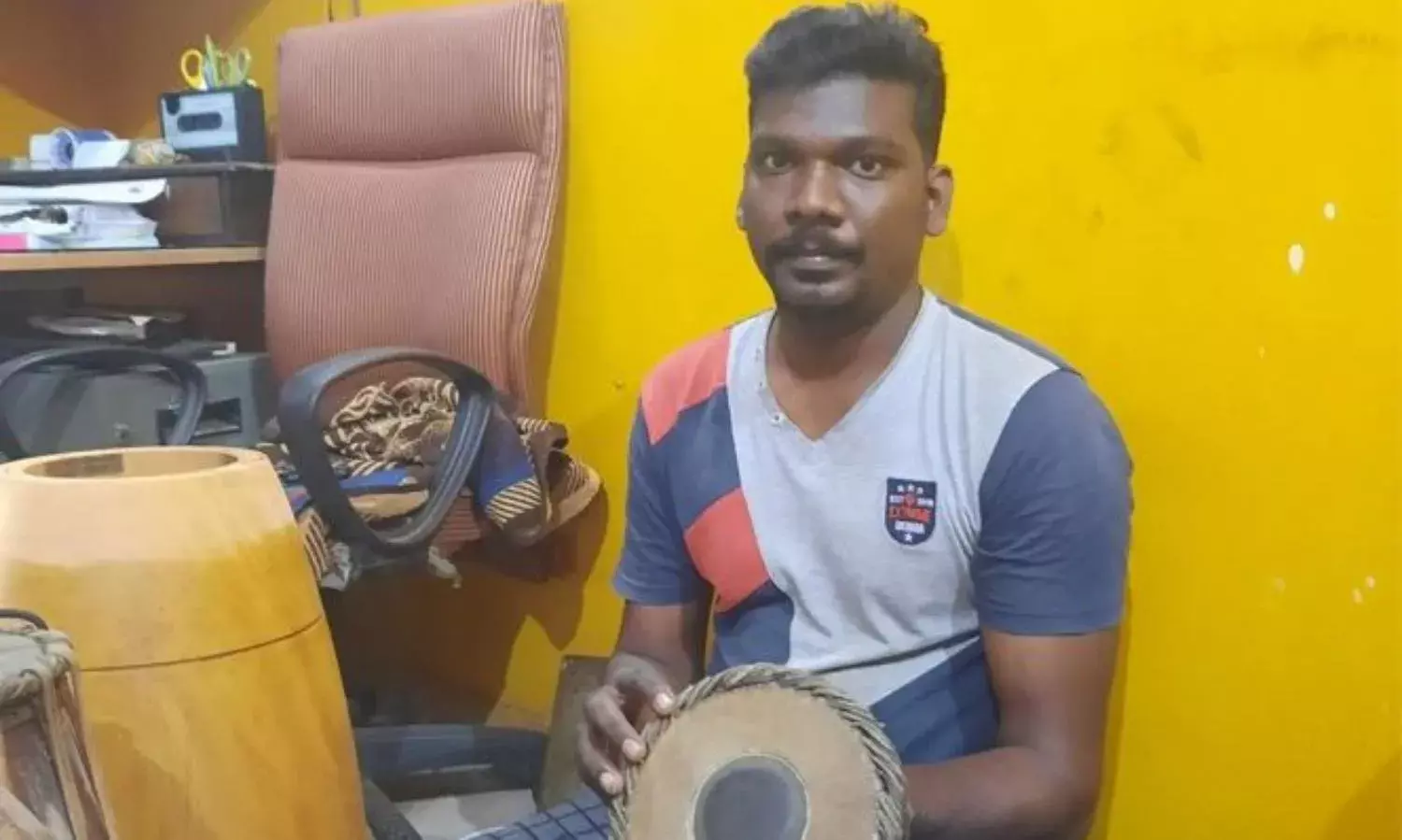The Nuanced Art of Mridangam Making Laced with Bias
‘Payment for the instrument was kept on the floor for us to collect’
The Mundakanni Amman temple is an important landmark for anyone venturing into the melodic lane of mridangam makers in Mylapore, Chennai. At the end of the lane is Jesudas (67) and Edwin Anthony’s (33) mridangam workshop. On entering, one can discern the musky scent of jackfruit wood and leather that saturate the air. The amber walls are adorned with pictures and figurines of Hindu deities and a photo of Christ. Indeed the most visually striking characteristic of the workshop is its medley of Hinduism and Christianity.
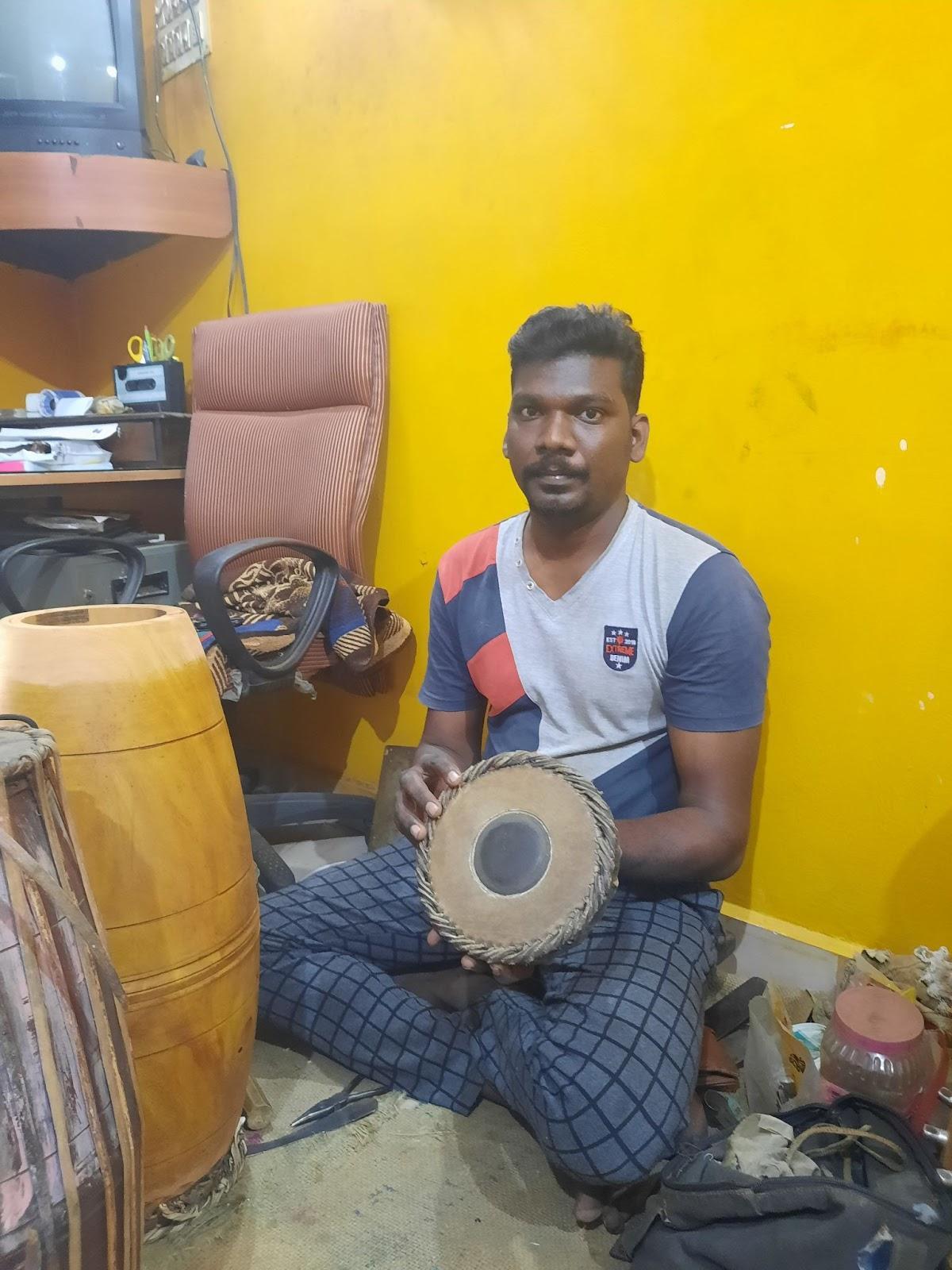
Edwin Anthony at his mridangam workshop in Mylapore
Edwin, the fifth-generation student of the art, is great-grandson of Thanjavur’s famous mridangam maker Sebastian Anthony. The family settled in Chennai when Edwin’s father Jesudas came here with the help of mridangam maestro Upendran from Thanjavur.
Edwin, who was born and raised in Chennai, mastered the art of mridangam making by the age of 17 but never got the chance to learn how to play it. He says the caste hierarchy in the realm of making and playing the mridangam is sly but deep-seated even today.
“A lot of notable mridangam artists appreciated my well-built hands and said they were well suited for playing mridangam, but none showed interest in actually passing on the art to me. We have always remained on the fringes,” says Edwin.
His first job at the workshop was to peel the vaaru (the leather straps wrapping the wooden body of the mridangam) off of mridangams that were sent to them for repair. Gradually, he was promoted to the job of spreading out dried animal skin on the floor, clamping it on all four sides and finally cutting and tooling it.
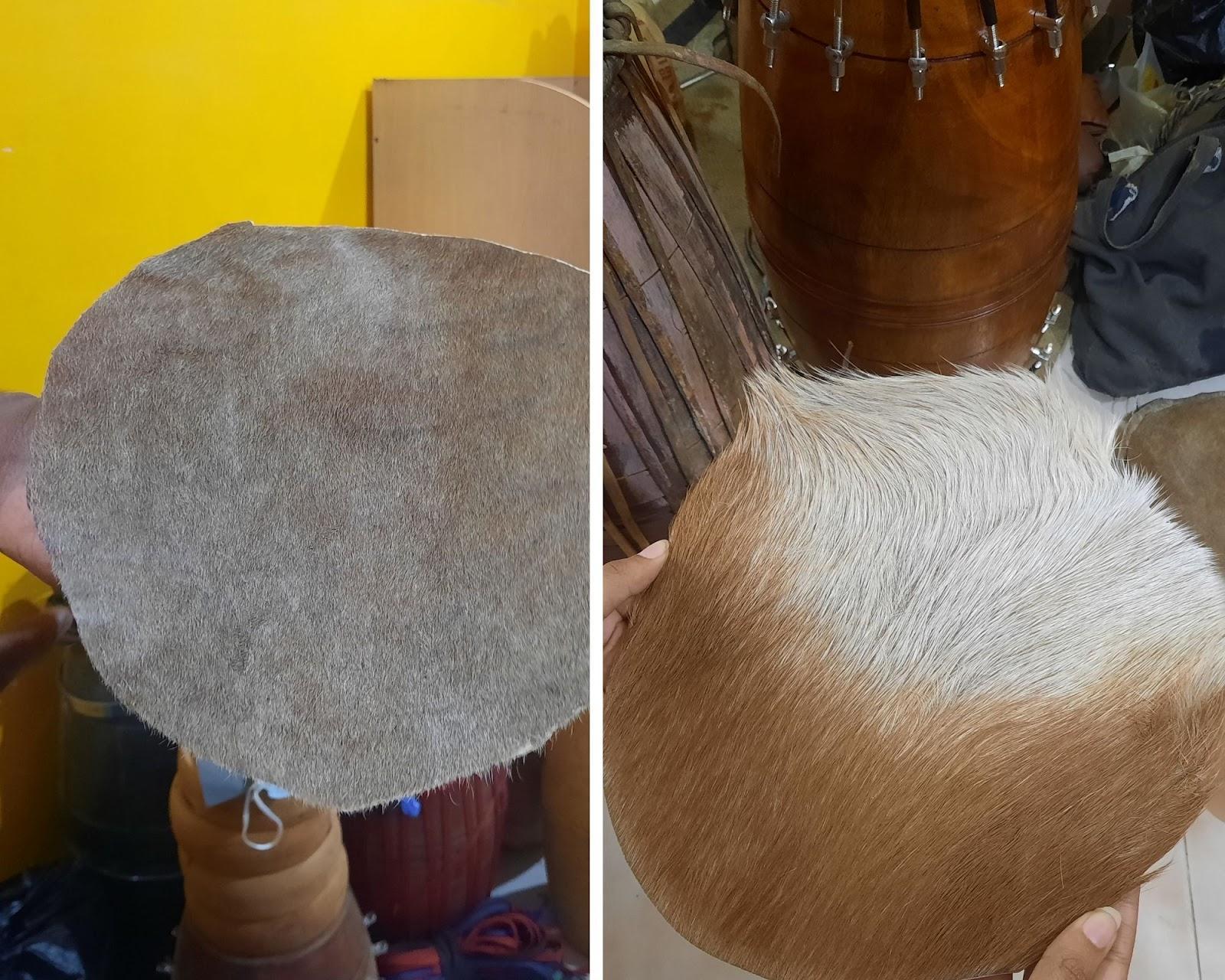
Cow leather; goat leather
Jesudas in his initial days in Chennai worked out of his home for a number of noted musicians – Pallakad Raghu, Thanjavur Upendran, Karaikudi Mani and Thanjavur Ramadas, to name a few. Over a period of 10 years, they set up a commercial workshop in Mylapore little by little.
Father and son source jackfruit wood from Panruti in the Cuddalore district, and leather from other areas of Tamil Nadu. Buffalo skin is purchased from Perambur in Chennai, while goat and cow hides are sourced from Ambur and Thanjavur respectively.
The skin of a whole buffalo, priced Rs 1,000–1,500 can be turned into eight full fledged mridangams. The cost of their mridangams differs by size, with the smallest priced at Rs 8,000 and the biggest going up to Rs 16,000 depending on the add-ons requested.
The most important element of the mridangam is the black circular membrane in the centre of the leather on both sides, called the kittan kallu, which is also sourced from Thanjavur. The stone found on the Cauvery riverbed is finely crushed along with rice and water to make a thick concoction, which is then applied to the leather.
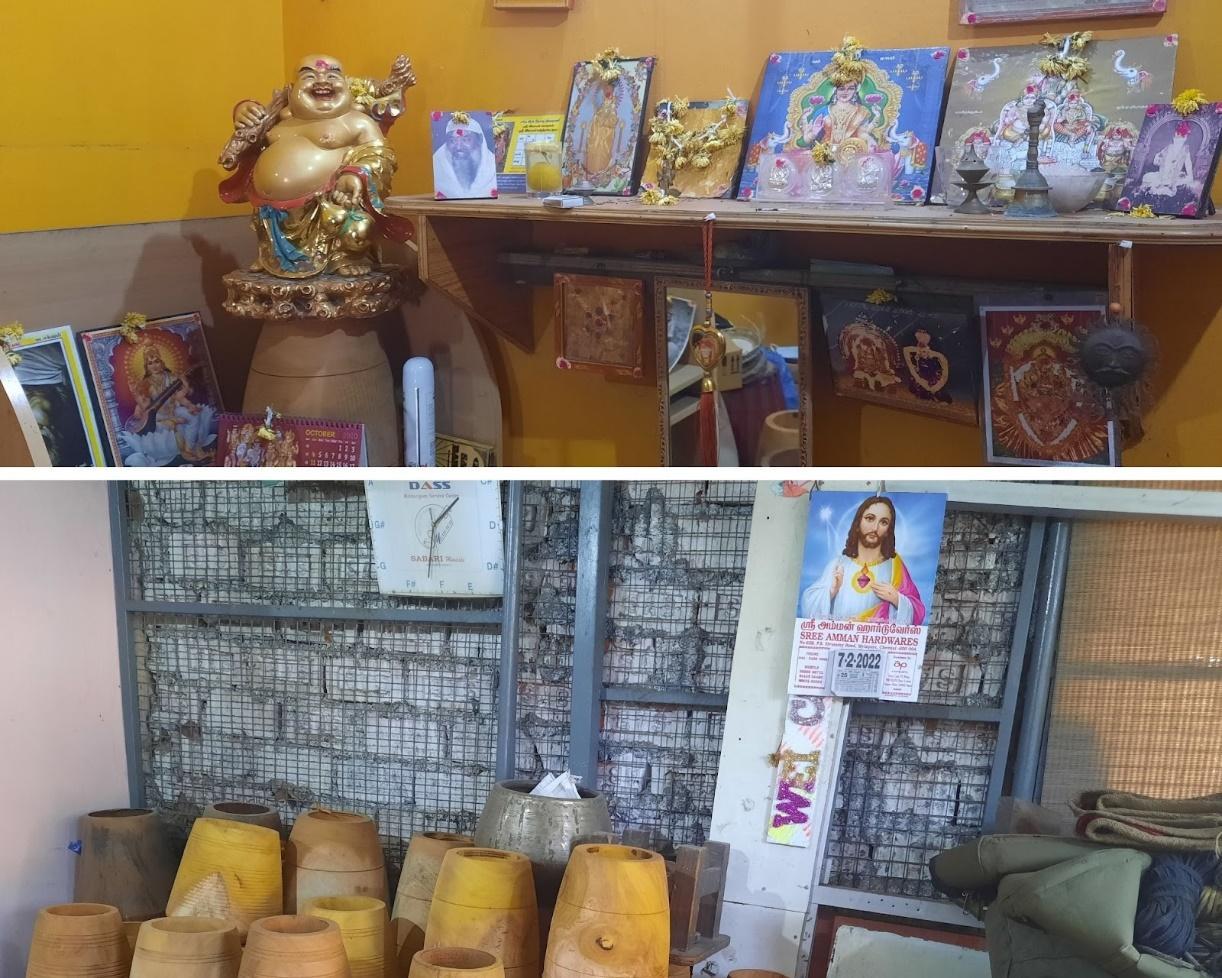
Walls of the workshop adorned with pictures of Hindu deities and Christ
Referring to TM Krishna’s book Sebastian and Sons, Edwin shed light on the caste and religious discrimination perpetrated on his ancestors in Thanjavur.
When his great grandfather, Sebastian Anthony, customised mridangams, the artist for whom he was making the instrument would not even let him enter the house. “Carnatic music was exclusive to Upper caste Brahmins but the legwork was done by us. The Upper caste artist would finalise the leather from a distance and would touch the mridangam and allow it inside the house only after it was fully crafted. Payment for the instrument was kept on the floor for us to collect,” Edwin recalls.
Over the years, such outright casteism could not survive, but there are still casteist undertones. “The very idea that Dalit Christians should stick to the keyboard and never dare to learn how to play the mridangam makes me uncomfortable,” says Edwin.
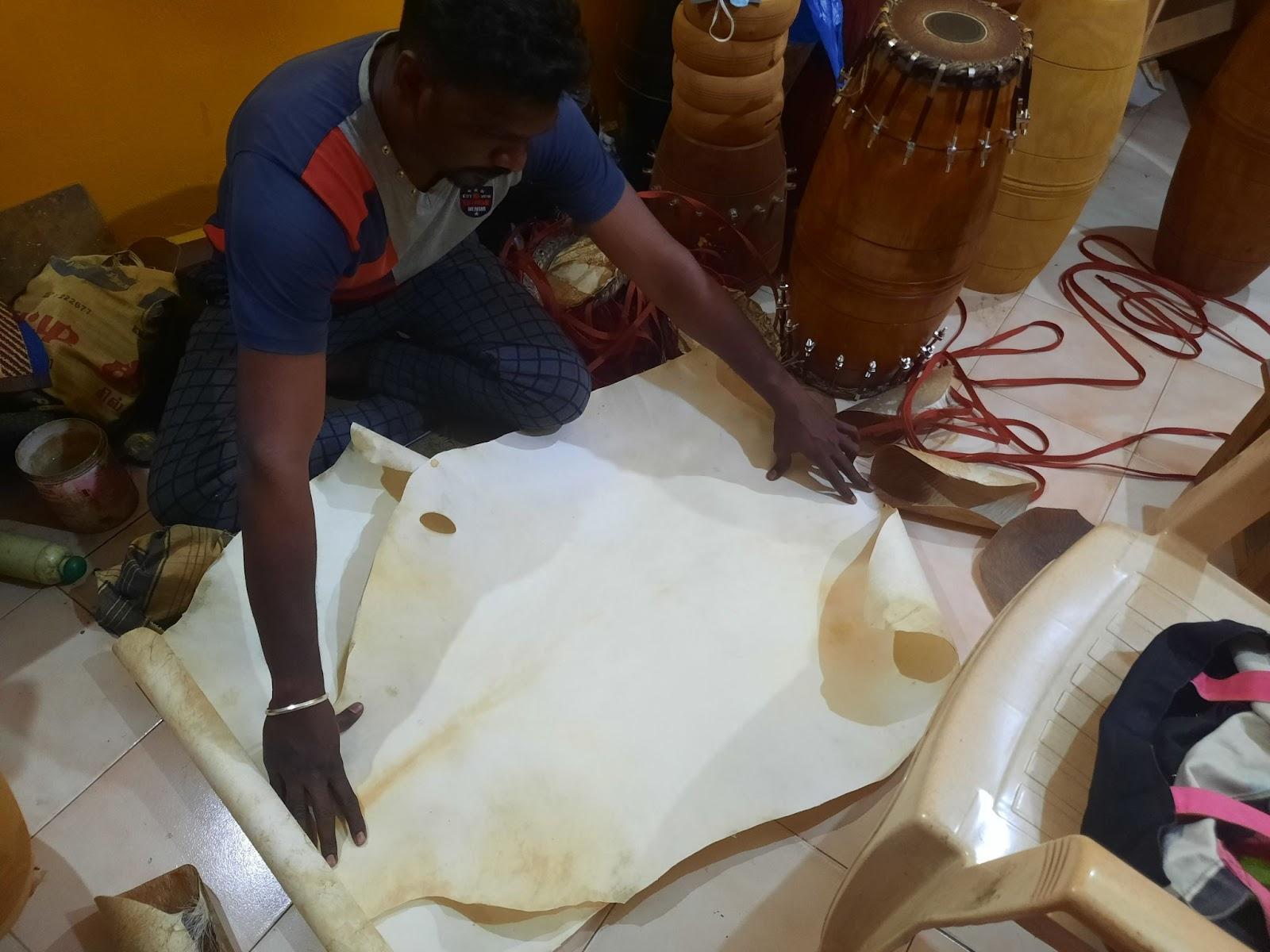
Edwin spreading out dried goat leather to work
An engineer by day and mridangam maker by evening, Edwin has expanded the business by making many customers overseas. He and his father create up to eight fresh mridangams each month, apart from servicing and tuning several others.
The Margazhi month (a month of bhakti and music in Tamil Nadu) which is usually a peak season in their profession, hit an unprecedented low during the first wave of the pandemic in 2020. After the second lockdown, they noticed a sharp rise in the purchase of mridangams as everyone had picked up a hobby during the lockdown. “We sold as many as three mridangams a week and were flooded with mridangams to be refurbished,” says Edwin.
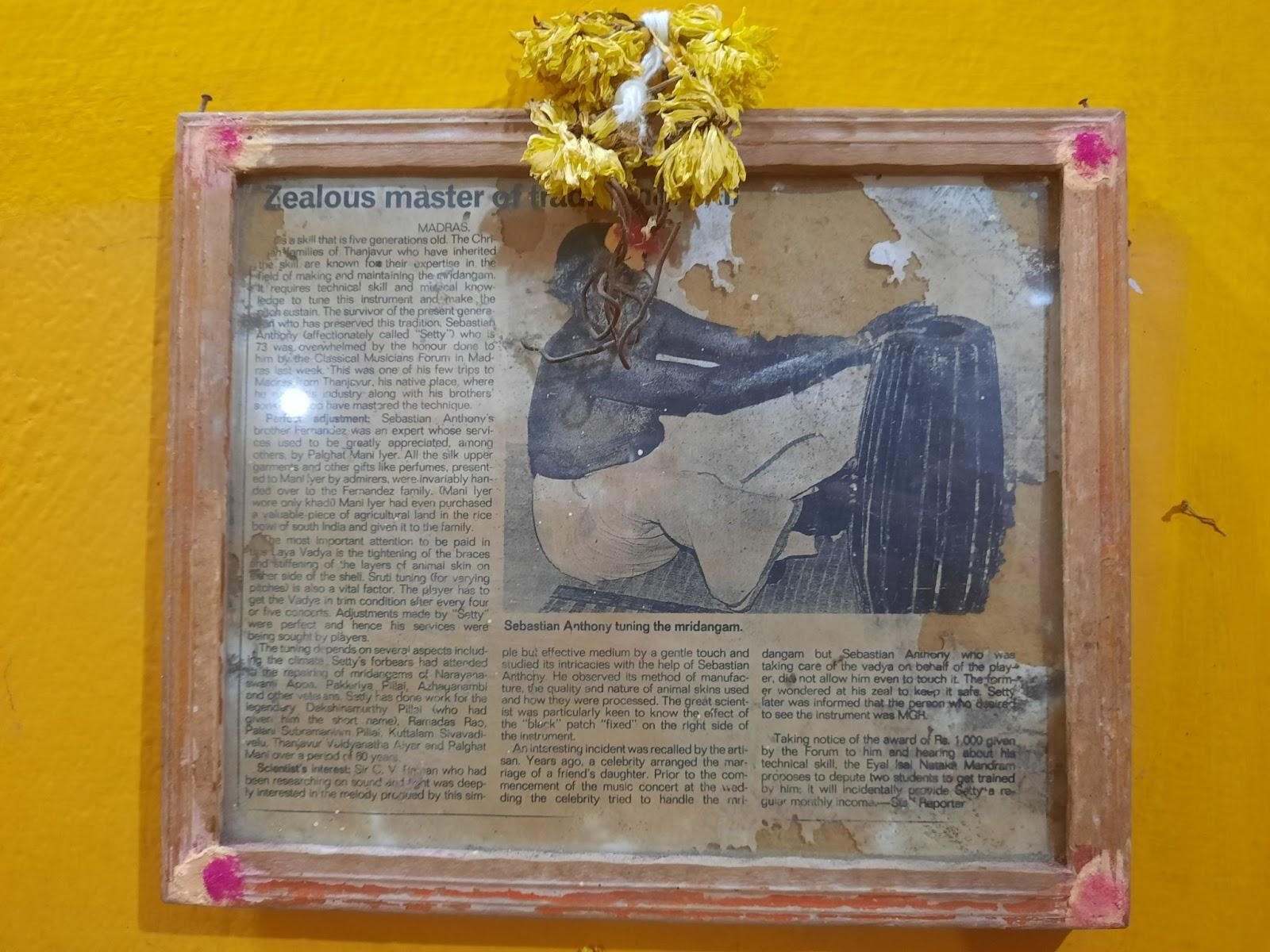
Newspaper article on Edwin’s great-grandfather, Sebastian Anthony
As a new-age mridangam maker in a world that is highly digitalised, Edwin feels that the gap between a mridangam maker and an artist has remained fixed. He says mridangam makers could not climb the ladder of economic success as the world of mridangam makers and players was anchored in caste inequality, with Brahmins monopolising the music.
He hopes that future generations in his family carry forward the legacy of mridangam making, and for acknowledgement and appreciation from audiences. More than anything, he wants his community to have a better standing in society.



